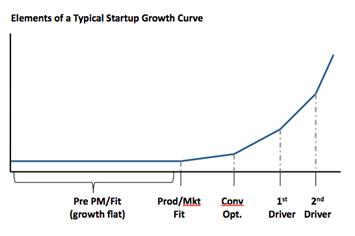
Traction trumps everything for angel investors. Traction is the proxy by which you can determine how well a startup is doing. It demonstrates that the team is able to execute together. That the product has a market with real customers.
“Traction is real customers. If you charge for your product, it’s real paying customers. If your product is free, it’s a real user base. In other words, traction is a signal that your team can produce real results in a real market.” – Gabriel Weinberg
Traction means a lot of different things. Is traction revenue? Maybe. Is traction number of uniques? Depends. Is traction conversion rate? Sometimes. Traction differs at different points in a company’s lifecycle, but it designed to show that there is a demand for the product/service you are building. And it’s not always revenue. There are different milestones for startups at different stages of development. The goal is to get to product/market fit quickly with a minimum viable product. Then establish metrics to measure and evaluate product performance.Dave McClure‘s Startup Metrics for Pirates is a great summary of the types of metrics startups can build into their applications and marketing analysis to track the effectiveness of their ability to attract, convert and retain customers.
How do you avoid expensive build, market and fail attempts?

Now you’ve got your metrics. You validated your minimum viable product. How do you get traction without spending a ton of cash?
Go figure out what you can do for zilch. That’s right nothing. Nada. Zip. Zero. Zilch. Assume you’ve got a marketing budget that is zero dollars. Then go figure out how you’re going to spend it to find, convert and retain customers. Pick a big, ostentatious goal. A million uniques. A million dollars in revenue. 25 new paying customers. The actual numbers are going to be specific to your startup. But the goal is to drive those numbers for as little (think $0) as possible using:
- Extreme customer service
- Inbound marketing
- Conference submissions
- Social media engagement
- Blogging
There are a lot off different activities that startups can do to help drive customers. Go drive real traction. Get to’er.
Need some inspiration. Check out:
- Flowtown’s blog: Teens and their Mobile Phones; How Women Use Social Media
- Sysomos’s Special Reports: Judging a Twitter User by Their Followers; Inside Blog Demographics
- Freshbooks: extreme customer satisfaction; SupperClub
- Hubspot: Inbound Marketing Kit; Grader.com
- Saul Colt: The Smartest Man in the World (aka making a splash at an event)
What are your favourite examples of startup marketing on the cheap?
Leave a Reply